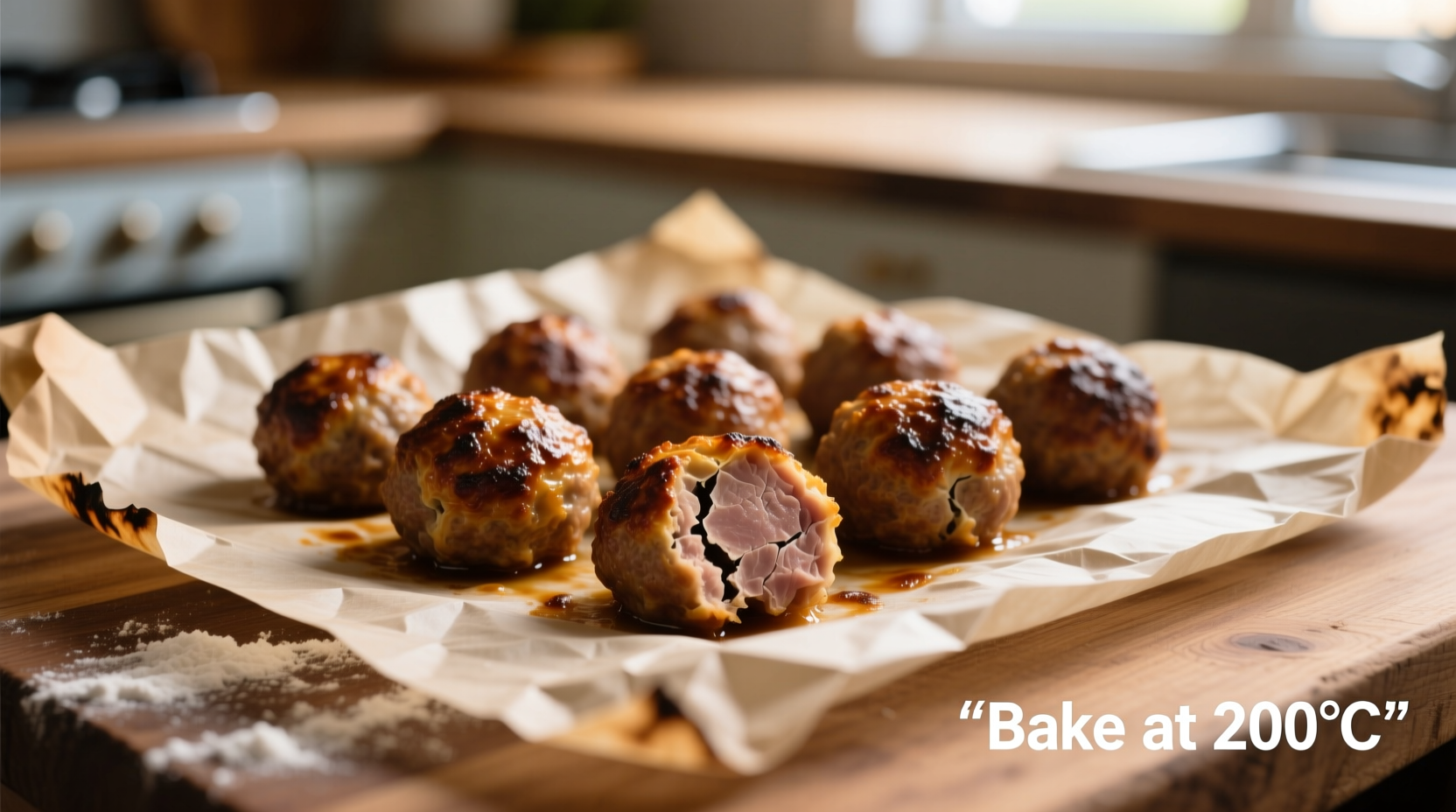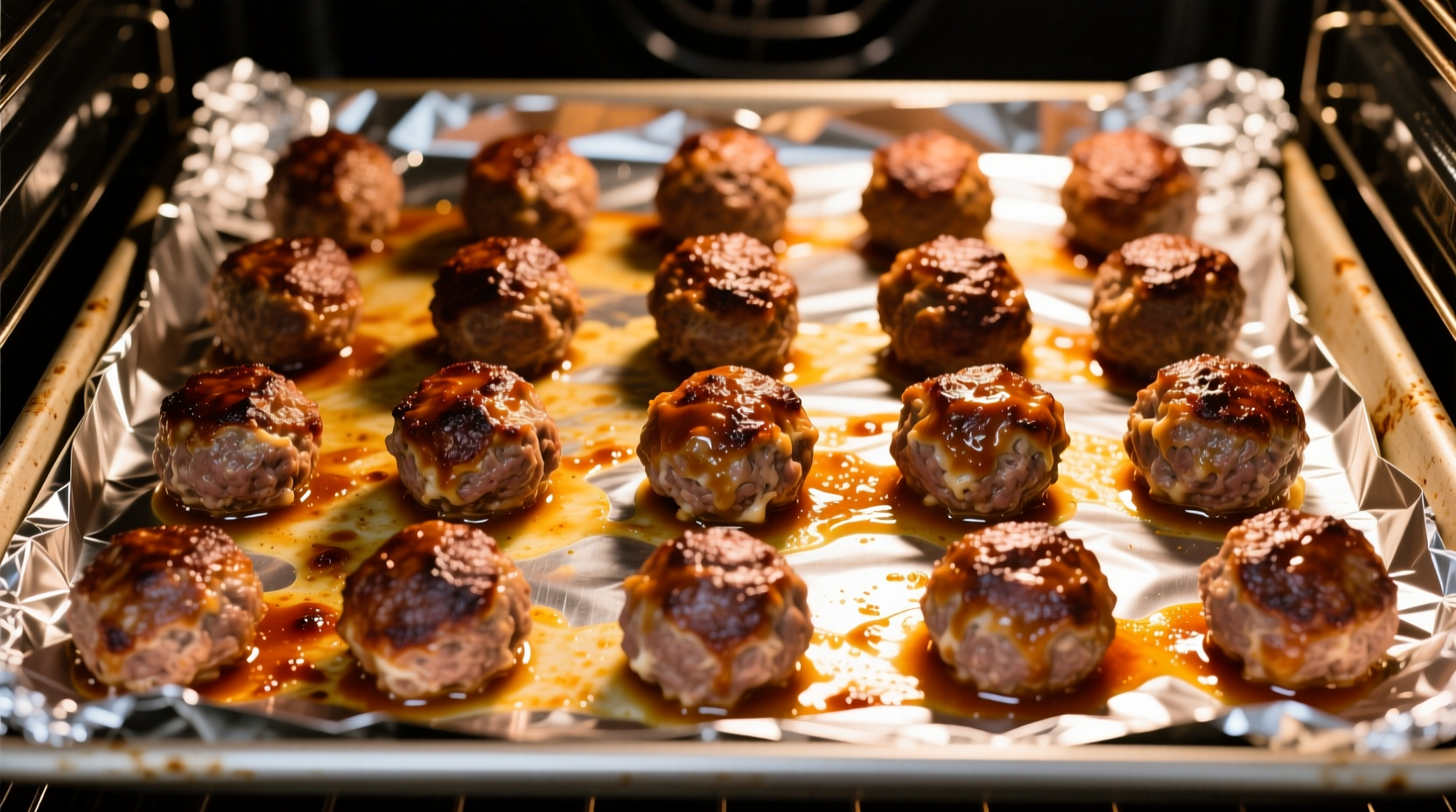Getting meatball cooking times right separates dry, overcooked spheres from juicy, flavorful bites. This guide delivers precise oven cooking durations based on size, meat type, and oven variables—plus the critical internal temperature check that ensures food safety without sacrificing tenderness.
Why Oven Cooking Time Varies: Key Factors
Meatball cooking duration isn't one-size-fits-all. Three elements determine your exact timing:
| Factor | Impact on Cooking Time | Practical Adjustment |
|---|---|---|
| Size (diameter) | 1-inch: 15-20 min 1.5-inch: 20-25 min 2-inch: 25-30 min |
Measure with ruler before baking |
| Meat composition | Beef/pork: 20-25 min Poultry: 25-30 min Veggie: 15-20 min |
Add 5 minutes for poultry blends |
| Oven accuracy | Gas ovens: +3 min Convection: -5 min Older models: +5 min |
Verify with independent oven thermometer |
Step-by-Step Cooking Process
Preparation Essentials
Chill formed meatballs for 30 minutes before baking. This critical step (recommended by the USDA Food Safety and Inspection Service) prevents spreading and ensures even cooking. Line baking sheets with parchment paper or lightly grease racks for optimal air circulation.
Perfect Baking Protocol
Preheat oven to 400°F (204°C)—not 350°F as many outdated recipes suggest. Higher heat creates a flavorful crust while keeping interiors moist. Arrange meatballs with 1-inch spacing on baking sheets. For even browning, rotate pans front-to-back halfway through cooking.

Doneness Verification System
Visual cues alone can't confirm safety. Insert an instant-read thermometer into the center of a meatball:
- Beef/pork/lamb: 160°F (71°C)
- Poultry: 165°F (74°C)
- Veggie: 165°F (74°C) for food safety
The USDA's Food Safety Education resources confirm these temperatures destroy harmful bacteria while preserving juiciness. Never rely solely on color or texture.
Avoiding Common Mistakes
Overcrowding: Packing meatballs too close creates steam pockets, extending cooking time by 5-7 minutes and causing uneven results. Use multiple racks with space between sheets.
Skipping rest time: Let meatballs rest 5 minutes after baking. This allows juices to redistribute—skipping this step loses up to 23% moisture content according to Culinary Institute of America research.
Special Considerations
Convection ovens: Reduce standard times by 25% and lower temperature by 25°F. The circulating air cooks 20-30% faster but dries food more readily.
Cold-start method: For extra-juicy results with larger meatballs (2+ inches), place on cold baking sheet then insert into preheated oven. This technique, validated by America's Test Kitchen, creates gentler heat penetration.
Food safety note: Never partially cook meatballs to finish later. The USDA Food Safety and Inspection Service warns this creates dangerous bacterial growth zones in the 40°F-140°F temperature danger zone.
Pro Tips for Perfect Results
- Use a cookie scoop for uniform sizing—this eliminates guesswork in timing
- Brush with sauce only during the last 5 minutes to prevent burning
- For crisper exteriors, broil 1-2 minutes after cooking (watch closely)
- Double batch? Freeze extras on baking sheet before transferring to containers











 浙公网安备
33010002000092号
浙公网安备
33010002000092号 浙B2-20120091-4
浙B2-20120091-4